http://jpstillwater.blogspot.com/2010/12/kabul-vs.html
When a friend of mine recently returned from six months in Afghanistan where he had been teaching school in Kabul, I jumped at the chance to grill him. At first he told me a lot of generalized stuff — such as how the young Afghans he talked with felt about the future of their country and how President Karzai’s brother Wali is the biggest heroin dealer in the world (that is if you don’t count Oxycontin manufacturers, the CIA and George Bush).
And then my friend started getting more specific about what he had seen and learned in Afghanistan, and the big differences between there and here. “In the past ten years, I’ve watched American cities turn into ghost towns — and the city of Kabul turn into a gold rush town, a boom town.”
Apparently jobs for Americans in the United States have become scarcer and scarcer but jobs for Americans in Afghanistan have really blossomed. “In Kabul, it’s almost impossible to get fired.”
While in Afghanistan, my friend had worked for an international NGO, teaching school to the children of Kabul’s educated class in a posh district over near the Makroyan, a former Soviet-style housing block, and a few blocks away from the U.S. embassy. He had also worked with Kabul’s beggar children and street rats as well.
“The Makroyan, which sports a fairly good water supply and electrical wiring, used to be a highly sought-after place to live before the giant housing boom that began in 2008 changed all that — as Kabul began to get all prettied up and the housing market became flooded with fancy new high-end high-rise apartment complexes. Now even the airport no longer looks all bombed out.” And don’t forget the giant new multi-billion-dollar prison complex just constructed by Americans out at Baghram as well.
“America has now been occupying Afghanistan even longer than the Russians were there,” continued my friend, “although you can still find plenty of evidence left from the Russian occupation, including several Soviet-style housing blocks and many Russian helicopters that are still in the air.”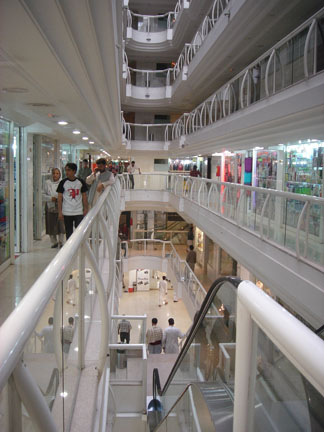
Then my friend talked about the last 50 years of Afghan history. “Americans here at home really don’t know much about Afghanistan or about its ten-year Russian occupation, its current American occupation, the huge American airbase in Kandahar built in 1963 or that the British also occupied Afghanistan back in the 1950s, when the Brits designed several extensive irrigation systems which later failed — making many sections of arable land in Afghanistan too salty to grow anything except opium poppies.
“What Americans are doing in these areas now is rehabbing those old British projects from the 1950s — and also rehabbing projects that Americans built in Afghanistan back in the 1950s and 1960s while trying to recreate images of suburban America in the Afghan outback.” And, from what I have heard, they’re also protecting Afghanistan’s poppy crops.
“A lot of kids beg in the streets around where I taught because the embassy and the ISAF are near here and offer a possible steady stream of people to beg from. The ISAF, the International Security Assistance Force, is composed mainly of Italians, Bulgarians and Turks and has been nicknamed ‘In Sandals And Flipflops’ by U.S. forces. But the street kids know U.S. and ISAF troops only in battle gear and with their guns pointed everywhere, and the attitude of the Americans is by far the most hostile on a routine basis. American military convoys are a huge annoyance on the streets of Kabul.
“While in Kabul, I worked with both the street kids and the educated kids, teaching English and sports to them both. And almost all of them, from every economic class that I taught, expressed a clear desire for Afghanistan to form a national identity, one that would break down barriers of race, culture, education and economics — and barriers between opportunities for boys and girls as well. The girls in Kabul also badly wanted to come out and learn.”
I find it ironic that Afghans seem to want to unify themselves so badly — at a time when all too many Americans seem to be trying to head in the opposite direction, to break down into special interest groups based on “Screw the Other Guy vs. Me First” ideologies and “Us vs. Them” mentalities instead of trying to strengthen our current national identity when the going gets tough.
“But is it safe in Kabul now?” I asked. “I’ve heard stories about kidnappings and bomb threats. Is this true?”
“Kabul is now basically safe because there are now checkpoints everywhere — checking for whatever, looking for Pashtuns from out of town, bombs, guns. And they have been really effective too. For instance, they found five suicide bombers complete with vests during the peace meetings that Karzai held last spring. The Afghan National Police are manning the checkpoints and they have been trained by German police.”
“And what about President Karzai? Is he popular in Afghanistan — or not?”
“There are both good and bad things to say about Karzai. He does have a power base and is not completely unpopular, but word over in Kabul is that he’s a junkie. Plus his brother Wali is the biggest heroin driver in the world. But Wali is also a power broker who secures the roads and gets paid millions in protection money from everyone, including Americans.”
Then my friend told me a joke about Karzai that is currently making the rounds. “The Taliban kidnapped President Karzai and issued a ransom note saying, ‘If you don’t come up with five million dollars, we are going to burn him up with petrol. Give all you can.’ So I gave two gallons.” Afghans apparently really like this joke.
According to my friend, there are two major factors involved in the American occupation — the September 11 war and the drug war. “Drug dealing is the thing that keeps it all going over in Afghanistan, where there are actually two wars going on. And the drug war is costing us more.
“In addition, we’re also creating more enemies because we burn poppy fields in order to take drug money away from the insurgency and smoke out the Taliban’s funding. And that’s not just in Helmand and Kandahar. It’s in the north too. Poppies are growing everywhere in Afghanistan and farmers rely on poppy crops for income. But it’s hard to find out what’s going on in these drug wars — for instance, why burn one field and not the other? I have no idea. They’re having a big offensive in Marja right now, to burn poppy crops there.”
Interesting. I’ve heard that it is the policy of American troops NOT to burn poppies as well. So. Whose poppies get burned and whose poppies don’t burn — and who decides that?
“How do the street kids that you worked with feel about Americans and the Taliban?” I asked next.
“Before we talk about the Taliban, let’s first talk about education. There is a ton of money going into schools in Afghanistan and there are more Afghan girls in school right now than ever before. But the main issue regarding education is the lack of schools for the ‘working children’ or street kids because the public schools cost money to attend. And like so many development schemes over there, the school buildings have been built but their operation has not been funded. All that the funders are required to do is to spend their money on hard-asset infrastructure/ school buildings — because it’s easier to track the progress and the skim.
“Likewise, it’s difficult to chart the progress of kids who can’t spend full days in school because their families require the money they can make on the street. And at one point someone decided that all the kids in Kabul were going to have been shipped out to the provinces.
“New schools are being built everywhere but there are almost no education programs in Afghanistan right now — and no one has been able to successfully address this problem at all.” Sounds like what is happening here in America too — with regard to our subtle economic war on teachers.
“A lot of Afghan families have a lot of kids, and these families are poor. And the parents need their kids to help support the families so the kids beg, wash cars, sell gum, carry water or whatever. Most kids there are unable to afford to attend school — either the boys or the girls.”
Plus girls don’t have access to sports in Afghanistan either. “Girls can’t play soccer in public. The Taliban has a hard line on that. And it is against the law for a woman to ride a bike on the street. And now there are more women wearing burkas than ever. One NGO, Skatistan, is building a skate park in Kabul now and actually went to the mullahs and asked them to issue a fatwa allowing girls to use skateboards. And the mullahs actually did — which opened up the Skatistan program to girls.”
Here’s more information regarding the Taliban. “Nobody likes them because almost all of the students I worked with live in a way that the Taliban wouldn’t approve of. And my students are all far-removed from the old Taliban times so don’t know much about that. But I’ve noticed among the adults I’ve talked with that, regarding which time-period in their recent history a particular Afghan prefers will depend on when he or she was doing well and on their skill sets. For instance if you did well during the Soviet times, you liked that time. However, no one looks back to the mujaheddin civil war time with nostalgia. That period was pretty much a nightmare for everyone.”
“So did some people like living under the old Taliban regime?”
“The generally-held view in Afghanistan is that the Taliban rose to power to bring justice and peace to a war-torn and lawless country. And for better or for worse, their justice system was more consistent than what had gone before it. Few people were above the law under the Taliban. Even if one of their own stepped out of line, they were usually punished. But now they have many who are above the law. The Taliban policed their own even. Karzai’s government fails in this way — it’s inconsistent. Some poppy fields are spared while others not. All kinds of stories circulate as to who is illegally doing what.”
And apparently Afghanistan has its own web of stories regarding what people believe is happening there now. “Some of these stories are crazy but people still believe them. 79% of all Afghans didn’t know about the 9-11 attacks and think America just came there to control Afghanistan’s mineral and strategic wealth.”
Ha. No wonder Afghans don’t know about 9-11! According to the latest WikiLeaks documents, it was Saudis who sponsored and paid for 9-11. So why didn’t Bush invade Saudi Arabia instead?
My friend then returned to the subject of national unity. “Afghan kids in Kabul are really into nationalism — into being one country instead of being divided into tribal groups. They want peace, along with stable systems of education, justice and economics. And they want Islam. Almost all Afghans are very devout Muslims and do the prayers. Adults, of course, pray regularly as required. But the teens pray also, and while kids are not expected to pray, fast, etc., many of them do. Alarmingly, even many really young kids participate in Ramadan. Afghans take Islam seriously.”
As for knowledge of the outside world’s view of Afghanistan, “Afghans are aware of the recent Christian fundamentalist Quran-burning episodes in America. They saw that on TV. Many get satellite TV reception in Kabul. And locally there are about five stations there, including Ariana TV and Tolo News. Tolo News can be accessed here in the U.S. at http://www.tolonews.com/en/afghanistan/1181-isaf-to-continue-night-raids-in-afghanistan-. Tolo News is in English and covers all things Afghan. It’s a good source if you want to know what is going on over there.”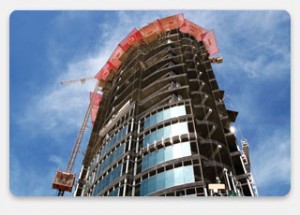
Here’s a sample headline of the kind of story you can find on www.tolonews.com: “Two End States in Afghanistan: Somalia of Asia or the Turkey of the East?”
As for international news coming out of Afghanistan, according to my friend all media there is completely blocked down. “If a journalist reports news stories adverse to U.S. interests, he or she will never work for the networks again. Even Tolo News doesn’t cover these kinds of stories because if they do, they are left out from access to U.S. bases. Journalists are under complete threat about never having a job in news again. Here’s an example: The number of people killed in an incident will be stretched out so that instead of reporting that 18 troops were killed by a suicide bomber, they will report that a few troops died one day and then perhaps three more died on the next day. And it’s also the same as what happened in Vietnam — where the number of enemies killed were multiplied and exaggerated. The news media here now is as highly filtered and filtered in the same way as the USSR news media was filtered back when the Soviets were here.”
And as to the Af-Pak area? My friend highly recommended that I watch a video on the subject called, “Down at the Gun Bazaar”. http://www.dailymotion.com/video/x1gizg_vice-travel-darra-pakistan_shortfilms “Definitely the largest firearms market in the world. They make a thousands guns a day here,” says the narrator.
“Kabul is currently a gold rush town, a boom town,” my friend continued. “A lot of building is going on there — mostly homes that they call ‘poppy palaces’. The best place to invest poppy money right now is in Kabul real estate. The poppy-palace mirrored-dome style of architecture has spread like wildfire. But the biggest difference between 2006 Kabul and 2010 Kabul is the lack of bomb craters and bullet holes in the walls. The new levels of growth and development from when I was there before and my recent trip to Kabul really freaked me out. And this new boom-town financing is coming mostly from U.S. military money, poppy money and development money from the US.”
Another big change in Afghanistan has been the improvement of its infrastructure. The road out to Bamiyan was being rebuilt and was the biggest public works project my friend had ever seen — and why not? American contractors make far more money installing roads than they do creating functioning hospitals and schools.
“This new Bamiyan road tears indiscriminately through villages and farmlands. But in a way it is a good thing because it has helped to modernize the country and has escalated the ability to move things around. And all of this has happened within in the last year, under Obama. But the fact that it has taken so long to complete just this one road should serve as Exhibit A in a trial of George W. Bush. They didn’t build hardly any formal infrastructure in Afghanistan under Bush. Money was going to road builders under Bush but the roads weren’t being built for the infrastructure. They were being built in order to further the war — or else Bush siphoned off money earmarked for Afghanistan and sent it off to Iraq.”
“Why did Bush do that?”
“Apparently Bush and his advisers thought that the Taliban would put up a bigger fight than they did — and so when they rolled over, Bush wanted a bigger war and he picked Iraq to perpetuate a lasting war, leaving our troops in Afghanistan hung out to dry, and thus creating the war we have now in a big way. Perhaps Obama is taking care of the business now that Bush should have taken care of years ago.”
But Obama is no saint in my friend’s eyes either. “The way that Obama is now dealing with Pakistan is bad. And by continuing the drug war as well, Obama is also doing the same thing that Bush did — so that ten years after the American invasion, American money and drug money is still poring into Afghanistan.” And out of America’s cities.
“The original pre-2001 Taliban sold poppies to western pharmaceutical companies legitimately but the current Afghan government sells NO poppies to drug companies. And there is a reason for that. Oxycontin, which is one of the U.S. pharmaceutical companies’ best-sellers, is basically synthetic heroin — but if western drug companies were forced to buy Afghan poppies instead of selling Oxycontin, the drug wars would be over in a minute. The entire problem in Afghanistan would be eliminated because it would set a standardized price for opium poppies there. Right now the price of heroin fluctuates according to how many fields are being burned, how many dealers are being arrested, how many facilities are being raided, etc.”
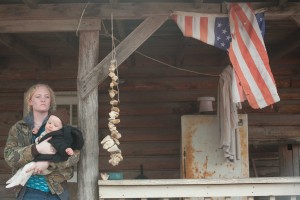 And if you want to know about how the heroin system works in Afghanistan, rent a copy of that DVD movie called “Winter’s Bone,” which describes how the methamphetamine production system works in Missouri. “Raising and manufacturing illegal drugs is currently a major way to survive in both Afghanistan and America.”
And if you want to know about how the heroin system works in Afghanistan, rent a copy of that DVD movie called “Winter’s Bone,” which describes how the methamphetamine production system works in Missouri. “Raising and manufacturing illegal drugs is currently a major way to survive in both Afghanistan and America.”
When my friend left St. Louis last spring, there were no jobs available at all. “No jobs and no prospects of finding one no matter what your educational level. People with masters degrees were working in fast food places, work trades, etc. And then I arrived in Kabul — and the difference between St. Louis and Kabul was astounding.
“In Kabul, there is nothing both Americans and Afghans can do to lose their jobs — but in St. Louis, they can’t even find jobs. I hadn’t even seen one help-wanted sign in St. Louis during the whole year and a half before I left. But in Kabul, westerners with any kind of skills had unbelievable pay packages, vacation days and benefits.”
“What kind of vacation days?”
“A conservative estimate is that a lot of people have vacation rates of four months on, six weeks off. They are then flown home or to Dubai. For instance, the UN staff is in catastrophic mode now and so receives many benefits. Workers in Afghanistan are defensive about the perks that they get but they get a lot compared to what they would get working in the US.”
But things have apparently picked up around St. Louis since my friend’s been back. “People used to be so scared and hunkered down that they wouldn’t spend any money. There was a collective petrification due to the economic downturn, which in turn was due to so much capital leaving our country without being accounted for — not only job-outsourcing money and offshore corporate money being laundered to avoid paying taxes but also the huge amounts of profits from what Americans spend on drugs that has been going off to Mexico, Afghanistan, South America. This has been a VERY big drain on our economy.”
Another big money drain here, according to my friend, has resulted from Americans buying illicit pharmaceuticals — which are not taxed and not counted. “In America, drug companies sell their products to distributors who then sell the product on to the doctors. And a lot of people who use illegal drugs also have real medical problems, for which they also get prescription drugs — but then they trade their legal prescription drugs off for meth, which they like more than Oxycontin.” Yikes! I didn’t know that. I just assumed that everyone else in America was like Rush Limbaugh.
“Selling Oxycontin is a huge business for the drug companies and they want this practice of trading Oxycontin for meth to continue. For instance, drug companies just spent billions lobbying Congress about keeping pseudoephedrines for sale over the counter.”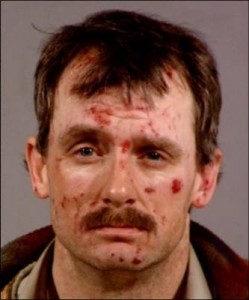
“Why is that?”
“So that you can make meth out of it. Meth dealers cook pseudoephedrines down with ammonia — like the ammonia in fertilizer. That’s how it’s done. Crank is also made with aluminum from beer cans — the aluminum bonds with the drug. Then it is snorted, smoked or shot up.”
But what’s so hot about meth? “It’s a long, long high. You can be high for four days on just a small amount. You don’t dream while you are high and you go into sleep derivation, wherein the body releases chemicals that are hallucinogenic almost. It’s the sleep deprivation factor. No amount of coffee can give you that. The brain needs its sleep. And meth won’t let you sleep.” Yuck.
“Jefferson County, right outside of St. Louis, is the meth-plague capital of the world. Meth is a cheap high.”
It seemed to me that my friend had gotten sidetracked into stories about meth production and I told him that. “No. I was just making another analogy between St. Louis and Kabul. A lot of drug companies here in America are unregulated cesspools and the same holds true with the unregulated use of drugs in Afghanistan.”
What goes on in Afghanistan doesn’t stay in Afghanistan however. “For another thing, the war in Afghanistan is basically fueled on Red Bull and up pills — so when troops come home, they are susceptible to becoming meth-heads.
“The first time people use meth, they get really really high and are unable to function, but then after they use for a while, they start to blend in — and can hold down a job. And then, after continued use, they can’t function as a normal person any more. They lose a lot of weight, and the life goes out of their eyes. They start to look older than they are. Less alive. Like zombies. And you can always tell a meth-head because of the sores. They start having big sores — because meth is basically a poison and the sores are caused by the poison being released into the bloodstream.” Double-yuck. And so perhaps America’s Afghan vets have become vulnerable to the illicit lure of crank after a couple years of living on uppers and Red Bulls.
“If you want to know more about meth use in America and how it supports the local economy while destroying the fabric of local society at the same time, watch the movie, ‘Winter’s Bone’. I recommend it.”
Here’s another example of how Kabul has become a boom town while St. Louis has become a ghost town. “In the 1960s, Northwest Plaza here was the biggest shopping mall in the world. Now it only has only one store still open — a shoe repair shop. And in the meantime, luxury malls in Kabul are going full blast. The Kabul City Center mall, owned by Wali Karzai, sells diamonds, electronics, iPods, and iPhones that you can’t even get in St. Louis. No development money being spent here but it is being spent in Afghanistan like water. All that money, along with the drug profits, is obviously going out of our economy.”
And apparently Kabul is actually physically safer for its average citizen than is St. Louis. “Kabul is safe in the context of using St. Louis as a standard — but it’s still pretty dangerous.” Hey, even Berkeley is relatively dangerous these days.
“85% of the cars driven in Kabul are Toyota Corrollas,” my friend added — but I forgot to ask him about what type of cars are being driven in St. Louis.

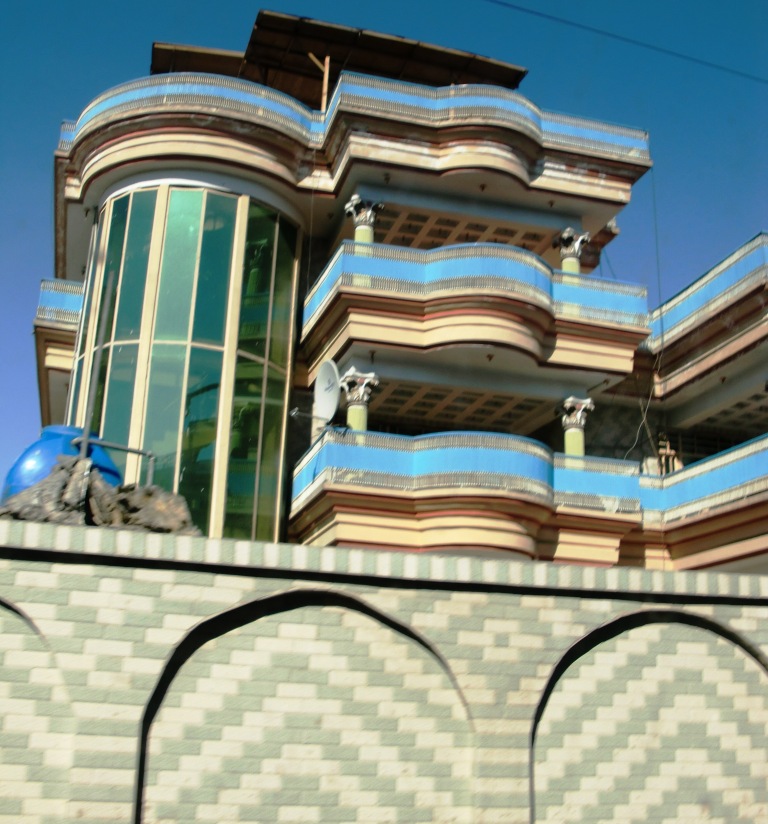
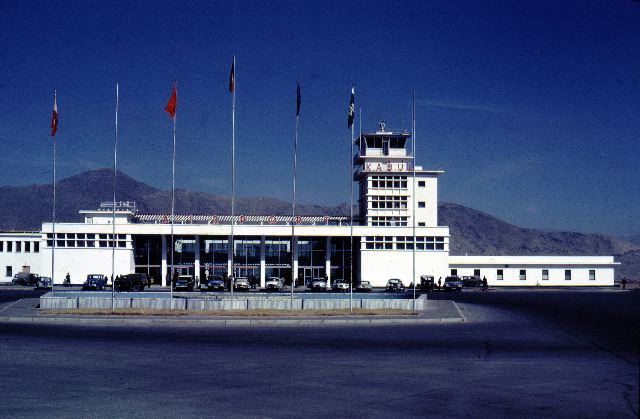
[…] class that I taught, expressed a clear desire for Afghanistan to form a … Excerpt from: Kabul vs. St. Louis: Boom town vs. Ghost town Share and […]
[…] This post was mentioned on Twitter by newswatchobama, Anthony Knight. Anthony Knight said: Kabul vs. St. Louis: Boom town vs. Ghost town: When my friend left St. Louis last spring, there were no jobs ava… http://bit.ly/f5ZJwb […]
I’ve often wondered how they separated poppy fields for their uses with the pharmaceutical companies and the more illegitimate activities. Leave it up to the U.S. to find a solution in the creation of far more harmful synthetic drugs. I also find it both interesting and ironic to note that the job prospects in Kabul are far more lucrative than within the economically floundering U.S. Ironic, primarily because of the number of American citizens who are so anxious about immigrants taking over their jobs. Why would anybody want a minimal wage job that doesn’t even cover the costs of rent and utilities in the US, if they can enjoy a comfortable middle class income in Afghanistan?
Very good read. Always a delight, Ms. Stillwater!
Another interesting development is the recent FDA decision to Black Box drugs like Vicodin and Percocet. They say it is due to the high (500mg) acetomenophen content and in reality people do damage their liver’s all the time abusing these drugs.
However they have not pulled Tylenol and other brands of generic acenomenophen from shelved and Black Boxed it and it has exactly the same 500mg amount of acetomenophen.
Given the above information I wonder if this FDA decision is more about making people use more Oxy and Methadone in order to push out Poppy producers they don’t like. It’s really a bad idea in terms of medicine because some people don’t respond the same to the sythetic and they remain in pain taking more and more of the drug becoming addicted at a faster rate.
Not to mention that the more natural, opium based drugs do not make you break out in hideous sores after you’ve been using them a couple of years. I once knew a man; an extremely intellectual one who turned me on to a number of great literary artists; whose first words when greeting someone new were, “I’m a junkie and a drunkard”. That he was, and it seemed a crime that he would waste his intelligence on drugs and alcohol, but the most aggravating part wasn’t his bad habits, but that he had remarkably sound, perfect teeth. I was twenty-seven at the time, and very particular about what i put into my body, but his teeth were as white and solid as mine. Somehow, it didn’t seem fair, but it might have had much to do with the quarter bottle or so worth of vitamins he chunked down on a daily basis.